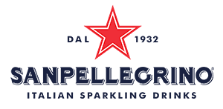Grape variety from the Loire (F) already mentioned in the 16th century around Anjou by Rabelais in his Gargantua, Chenin Blanc takes its name from the monastery of Montchenin in Touraine. The DNA test showed that the Chenin Blanc is a natural child of Savagnin, and a brother of Trousseau and Sauvignon Blanc. Sensitive to gray rot, Chenin Blanc can produce a wide range of wines, ranging from sparkling to dry, mellow or sweet wines. In Switzerland, its meager surfaces are mainly located in Geneva, then in Valais and in the canton of Vaud.
Information
Aroma Potential
Gives a very fruity wine with a lot of bouquet, elegant, always presenting a good acidity, generally quite lively, nervous, which can be kept for a very long time.Usually used to produce sweet wines.Aromas of dried apricot, acacia, bitter almond, toasted almond, pineapple, hawthorn, banana, bergamot, brioche, cocoa, chamomile, cinnamon, honeysuckle, lemon, quince, pear compote, quince or apricot jam, candied date, citrus peel, spices, dried fig, white flowers, cut hay, candied fruit, broom, wallflower, mango, mint, honey, mineral, muscat, hazelnut, walnut, mineral notes, grapefruit, quince paste, white peach, pear white, apple, currant, liquorice, rose, tea, lime, white truffle, verbena.








